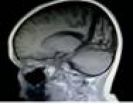(Press-News.org) NEW YORK – Menopausal women have long reported experiencing hot flashes, mood swings, night sweats and memory lapses, too.
A new study from researchers in the Perelman School of Medicine at the University of Pennsylvania shows preliminary evidence that the psychostimulant drug lisdexamfetamine (LDX) can aid post-menopausal women by improving attention and concentration, organization, working memory and recall. The findings will be presented by C. Neil Epperson, MD, director of the Penn Center for Women's Behavioral Wellness, on Tuesday during the American Psychiatric Association annual meeting at the Jacob K. Javits Convention Center in New York City.
Dr. Epperson's study enrolled 30 women between the ages of 48 and 60 who had experienced a diminished ability to focus and multi-task in their early post-menopausal years. The cohort was made up of successful women –none of whom were more than five years post-menopause.
"We believe estradiol, a form of estrogen, is very important in normal brain function, specifically in the pre-frontal cortex, which regulates executive function—organization, recall, memory and other cognitive functions," Epperson says. "Its decline during the menopausal years, we believe, can play a role in the simultaneous decline in executive function that many women experience during the menopause transition. More specifically, estrogen plays a role in dopamine levels and the brain's normal dopaminergic tone. "We theorize that this process can result in symptoms similar to those experienced by people with attention deficit hyperactivity disorder."
The double-blind, placebo-controlled crossover study gave participants a four week regimen of LDX (which has been approved by the FDA for the treatment of ADHD) as well as four weeks of placebo to assess the drug's effectiveness in reducing subjective, new-onset executive function difficulties, and improving performance on verbal recall, working memory and attention tasks.
A subset of women also underwent brain imaging, functional MRI and proton magnetic resonance spectroscopy to assess brain activation and dorsal lateral prefrontal cortex neurochemistry.
The women were then asked to report their level of executive function across five domains: Organization and motivation for work; concentration and attention; alertness, effort and processing speed and managing affective interference, the tendency to overly focus on the emotion of a message; and working memory and recall.
Preliminary data show that all executive function domains, except managing affective interference, showed a significant reduction in severity of symptoms during active LDX treatment versus treatment with placebo. In one domain, organization and motivation for work, the severity of reported impairment predicted the degree of response to LDX treatment such that women with greater severity of symptoms in this domain found the greatest improvement with LDX treatment.
"While some individuals experienced no improvement with LDX, we were heartened by these findings and hope to examine the genetic profile of our participants in the near future to determine whether there are predictors regarding who is is most likely to experience improvement with this kind of treatment," says Epperson.
"We know that estradiol treatment is helpful in only a subset of the population of menopausal women with cognitive and mood complaints and for many women estradiol treatment is not an option due to their medical history. It is crucial that we identify treatment options for those women who experience significant changes in cognition during this transition, whether it occurs naturally or is induced by surgery or chemotherapies."
She suggests that additional research will be necessary to determine if pyschostimulants that work for very different, but related, conditions, might be an option for these menopausal women with executive function issues.
Epperson will present the abstract "Mid-life Onset of ADHD-like Cognitive Impairments in Menopausal Women," on Tuesday, May 6th in Room 1E09, Level 1 location from 2 p.m. to 5 p.m.
INFORMATION:
Penn Medicine is one of the world's leading academic medical centers, dedicated to the related missions of medical education, biomedical research, and excellence in patient care. Penn Medicine consists of the Raymond and Ruth Perelman School of Medicine at the University of Pennsylvania (founded in 1765 as the nation's first medical school) and the University of Pennsylvania Health System, which together form a $4.3 billion enterprise.
The Perelman School of Medicine has been ranked among the top five medical schools in the United States for the past 17 years, according to U.S. News & World Report's survey of research-oriented medical schools. The School is consistently among the nation's top recipients of funding from the National Institutes of Health, with $392 million awarded in the 2013 fiscal year.
The University of Pennsylvania Health System's patient care facilities include: The Hospital of the University of Pennsylvania -- recognized as one of the nation's top "Honor Roll" hospitals by U.S. News & World Report; Penn Presbyterian Medical Center; Chester County Hospital; Penn Wissahickon Hospice; and Pennsylvania Hospital -- the nation's first hospital, founded in 1751. Additional affiliated inpatient care facilities and services throughout the Philadelphia region include Chestnut Hill Hospital and Good Shepherd Penn Partners, a partnership between Good Shepherd Rehabilitation Network and Penn Medicine.
Penn Medicine is committed to improving lives and health through a variety of community-based programs and activities. In fiscal year 2013, Penn Medicine provided $814 million to benefit our community.
Penn study shows stimulant drug may help women cope with post-menopausal memory lapses
2014-05-05
ELSE PRESS RELEASES FROM THIS DATE:
Inbred wolves struggle, moose proliferate at Isle Royale National Park
2014-05-05
During their annual Winter Study at Isle Royale National Park, scientists from Michigan Technological University counted nine wolves organized into one breeding pack and a second small group that is a remnant of a formerly breeding pack.
In the Isle Royale Wolf-Moose Study’s annual report released today, the researchers say that over the past three years, they have tallied the lowest numbers of wolves ever: nine in 2011–12, eight in 2012–13 and nine in 2013–14. During the same period, predation rates—the proportion of the moose population killed by wolves—also dropped ...
Infusion of young blood recharges brains of old mice, Stanford study finds
2014-05-05
STANFORD, Calif. — Something — or some things — in the blood of young mice has the ability to restore mental capabilities in old mice, a new study by Stanford University School of Medicine investigators has found.
If the same goes for humans, it could spell a new paradigm for recharging our aging brains, and it might mean new therapeutic approaches for treating dementias such as Alzheimer's disease.
In the study, to be published online May 4 in Nature Medicine, the researchers used sophisticated techniques to pin down numerous important molecular, neuroanatomical and ...
Compound Formula Rehmannia alleviates dyskinesia in Parkinson's disease
2014-05-05
Levodopa is the preferred treatment for Parkinson's disease in the clinic. However, long-term use of levodopa may lead to various motor complications, among which levodopa-induced dyskinesia is the most common, severely affecting patients' quality of life. Dr. Jiancheng He and co-workers from Shanghai University of Traditional Chinese Medicine in China established a model of Parkinson's disease dyskinesia in rats, and treated these animals with Compound Formula Rehmannia. They found that Compound Formula Rehmannia alleviates levodopa-induced dyskinesia in Parkinson's disease ...
New idea for hearing improvement in patients with hearing aids under background noise
2014-05-05
Patients with implanted artificial cochlea often complain that they cannot recognize speech well in natural environments, especially if background of noise is present. Researchers think that a poor ability to localize sound in a complex auditory environment is responsible for the weak speech perception observed under these conditions. Pentobarbital anesthesia prolongs the recovery time of responses to lagging stimulus. The effects of pentobarbital anesthesia on the precedence effect stem from decreased dissociation of gamma-aminobutyric acid from its receptor (i.e., it ...
When highest perceptual ability occurs in a day?
2014-05-05
Many previous chronobiological studies have reported on detection of circadian fluctuation in performing simple motor tasks, fine skilled movement, and anaerobic exercise. However, to the best of our knowledge, literature concerning variation of sensory function according to the circadian cycle is lacking. Therefore, Yong Hyun Kwon and co-workers from Yeungnam University College of Science and Technology in Republic of Korea observed and compared the circadian fluctuations in tactile sense, joint reposition sense and two-point discrimination in 21healthy adult subjects ...
PQ disconnection with the activity of isolated PTO nerve tissue for seizure control
2014-05-05
Diffuse lesions involving the posterior quadrant (PQ) of the cerebral hemisphere (temporal, parietal, and occipital lobes) induce intractable epilepsy. These patients are potential candidates for surgical treatment. Maintenance of isolated nerve tissue activity after surgery plays a crucial role in the neuroprotective effects of neurosurgery treatment. Shaoya Yin and colleagues from Tianjin Huanhu Hospital in China selected two patients with temporal-parietal-occipital (PTO) intractable epilepsy to receive posterior quadrant disconnection. Postoperative MRI scans of the ...
A first: Nuclear transfer to reprogram adult patient cells into stem cells
2014-05-05
Jerusalem, May 4, 2014 -- The capacity to reprogram adult patient cells into pluripotent, embryonic-like, stem cells by nuclear transfer has been reported as a breakthrough by scientists from the US and the Hebrew University of Jerusalem.
The work, described in the journal Nature, was accomplished by researchers from the New York Stem Cell Foundation Research Institute and Columbia University and by Nissim Benvenisty, the Herbert Cohn professor of Cancer Research and director of the Stem Cell Unit at the Institute of Life Sciences at the Hebrew University of Jerusalem, ...
Glutamine ratio is key ovarian cancer indicator
2014-05-05
HOUSTON -- (May 5, 2014) -- A Rice University-led analysis of the metabolic profiles of hundreds of ovarian tumors has revealed a new test to determine whether ovarian cancer cells have the potential to metastasize, or spread to other parts of the body. The study also suggests how ovarian cancer treatments can be tailored based on the metabolic profile of a particular tumor.
The research, which appears online this week in Molecular Systems Biology, was conducted at the Texas Medical Center in Houston by researchers from Rice, the University of Texas MD Anderson Cancer ...
New technique tracks proteins in single HIV particle
2014-05-05
An interdisciplinary team of scientists from KU Leuven in Belgium has developed a new technique to examine how proteins interact with each other at the level of a single HIV viral particle. The technique allows scientists to study the life-threatening virus in detail and makes screening potential anti-HIV drugs quicker and more efficient. The technique can also be used to study other diseases.
Understanding how the human immunodeficiency virus (HIV) reproduces itself is crucial in the effort to fight the disease. Upon entering the bloodstream, HIV viral particles, or ...
Low testosterone levels may indicate worsening of disease for men with prostate cancer
2014-05-05
For men with low-risk prostate cancer, low levels of testosterone may indicate a worsening of their disease. That's the conclusion of a new study published in BJU International. The findings may help physicians identify patients with low-risk prostate cancer who should receive aggressive anticancer treatment.
Men with prostate cancer that is not life threatening and is only slowly progressing, can often forego treatment and instead undergo active surveillance. This involves close monitoring to ensure that their disease does not become serious and jeopardize their health. ...



